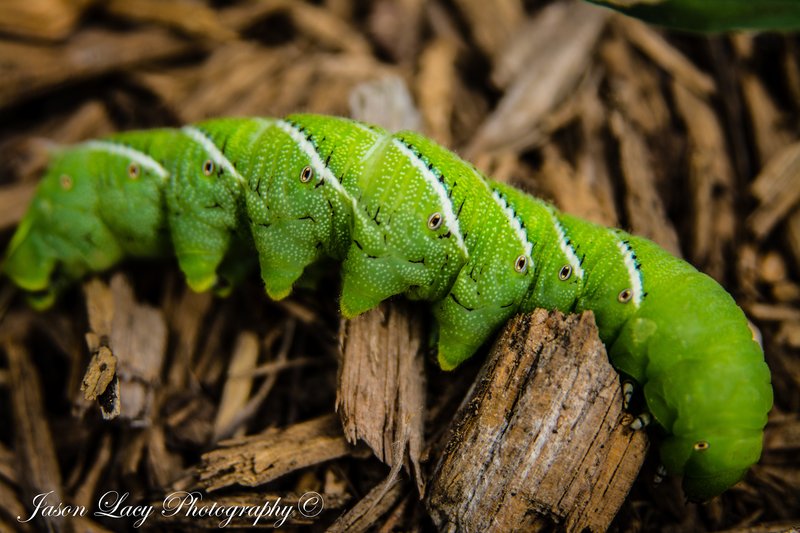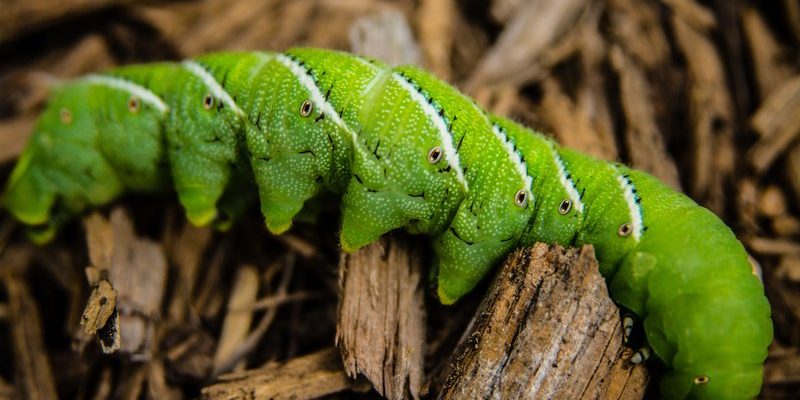
Imagine being a hornworm, living on a plant that could be dried up by the sun or soaked by rain at any moment. It might seem like a tough life, but hornworms come equipped with some clever adaptations. Understanding how these creatures manage to stay alive might just give us a better appreciation for their resilience—and maybe even inspire us to adapt a little ourselves, right?
The Biology of Hornworms: Nature’s Survivors
Hornworms, particularly the tomato hornworm, are fascinating creatures with some remarkable biological traits. One of the key factors in their survival is their ability to camouflage. These green larvae blend seamlessly with the leaves of the plants they inhabit, making it hard for predators to spot them. This adaptation not only helps them persist when food is scarce but also protects them from birds and other hungry critters.
But their camouflage isn’t the only thing that makes hornworms survival experts. They also possess a unique physiology that helps them regulate their body temperature and moisture levels. You see, hornworms are ectothermic, which means their body temperature changes with their environment. This can be a disadvantage during extreme hot or cold weather, but they’ve learned to adapt by seeking shelter. During hot days, they burrow into the soil or find shade under foliage, while on chilly nights, they tuck deeper into the plants to stay warm.
Water Conservation Strategies
Water is life, especially for hornworms. During dry spells, these larvae have developed some nifty strategies to conserve water. One of their main tactics is their ability to reduce their metabolic rate. By slowing down their metabolism, hornworms can minimize water loss and survive prolonged periods without food. It’s like hitting the snooze button on their biological clock!
Hornworms also have a protective outer layer called the cuticle. This layer helps to minimize moisture loss from their bodies. When conditions get tough, the cuticle acts as a shield, keeping the precious moisture inside while still allowing them to breathe. This ability to conserve water not only helps them endure dry spells but also positions them favorably to thrive when the rains finally come.
Temperature Regulation: Finding the Balance
You might be wondering how hornworms cope with temperature extremes. When the sun blazes down, these little fellows might seem defenseless. However, they have evolved some clever ways to dodge the heat. Hornworms are masters at seeking out cooler spots. They’ll slow down their activity during the hottest part of the day, often hanging out in the shade or burrowing into the soil where temperatures are more bearable.
Conversely, when temperatures drop, hornworms can enter a state of dormancy called diapause. This is kind of like hibernation for hornworms, allowing them to survive through the cold months by slowing down their metabolism and conserving energy. In this state, they can withstand freezing temperatures, which is crucial for their survival in regions where winters can be particularly harsh.
Feeding Habits and Food Sources
The choice of food plays a significant role in the survival of hornworms. These larvae are known for their voracious appetites, mainly munching on the leaves of plants like tomatoes and peppers. When food is abundant, hornworms grow quickly, which allows them to complete their life cycle before harsh weather hits.
However, during periods of food scarcity, they’ve got a backup plan. Hornworms can switch their diets to other leaves or find alternative plants that might not be their first choice but still provide sustenance. This adaptability is a fantastic survival trait. Think of it as having a plan B when things don’t go your way!
Predation and Defense Mechanisms
In the wild, hornworms are not just battling the weather; they’re also up against predators—like birds and wasps looking for a tasty meal. To stay alive, hornworms have developed some interesting defense mechanisms. For instance, when threatened, they can exhibit a behavior known as “hyperplasia,” which is essentially a fancy term for expanding and twisting their bodies to make themselves look larger and more intimidating.
Some hornworms also have a surprising trick up their sleeves: they can create false eye spots on their bodies that mimic larger creatures. This can deter predators who might think twice before attacking something that looks like it’s ready to fight back. It’s like putting on a costume that makes them seem bigger and tougher—who wouldn’t want that advantage in a showdown?
Communication and Social Behavior
While hornworms may not communicate in the conventional sense, they possess fascinating social behaviors that help them survive. For example, they can sense the presence of their fellow larvae and will often avoid crowded areas. This helps reduce competition for food and keeps them safer from predators that might be drawn to a larger gathering.
Additionally, hornworms release pheromones, which are chemicals that can signal danger or attract mates. This chemical communication can play a crucial role in their survival, allowing them to keep in touch with their peers and make decisions that help ensure their growth and safety.
Adaptations for Reproduction
Let’s not forget that the goal of survival for hornworms ultimately leads to reproduction. They need to make sure the next generation can thrive through whatever comes their way. Once they mature, hornworms will pupate and eventually emerge as adult moths, ready to continue the cycle. The timing of this transformation is key: many species will time their emergence to avoid harsh weather, ensuring that they’re ready to mate when conditions are optimal.
The female moths can lay hundreds of eggs at once, ensuring that at least some will survive, even if the weather turns unfavorable. It’s nature’s way of ensuring the survival of the species, and it showcases just how resourceful these creatures are—like nature’s little soldiers prepared for battle.
In conclusion, hornworms may be small, but they show us just how adaptable and resilient life can be in the face of harsh weather. With their clever survival strategies—like water conservation, temperature regulation, and effective predation defenses—they not only make it through challenging conditions but also flourish in their environments. So next time you see one of these caterpillars, remember the incredible journey they undertake to survive and thrive!

